Despite being smaller than a square mile, the neighborhood of Chelsea is home to three areas designated by the NYC Landmarks Preservation Commission as historic districts. Each commemorates an era in the area’s history, encompassing its earliest homes and its industrial past.
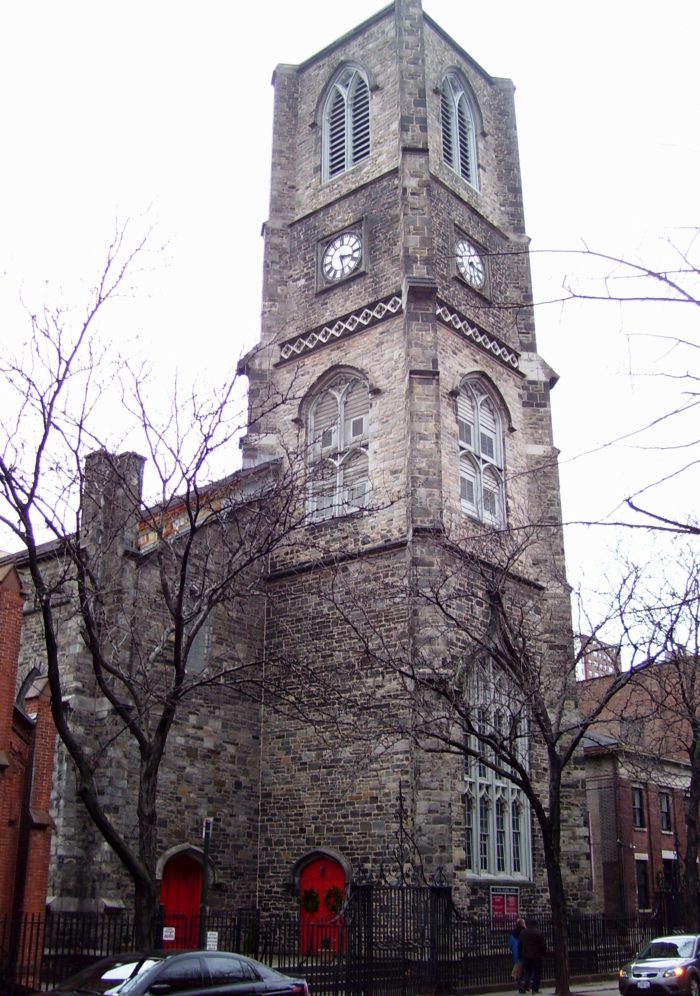
St. Peter’s Episcopal Church. Image: Beyond My Ken/Wikimedia
Running roughly from West 20th to 22nd Streets between 8th and 10th Avenues, the Chelsea Historic District not only was designed a historic district in 1970, but in 1977 it was added to the National Register of Historic Places as well. Among the oldest buildings within the district is St. Peter’s Episcopal Church (346 West 20th Street, between Eighth and Ninth Avenues). The original Greek Revival chapel, consecrated in 1831, is now the rectory. The current church, with its dramatic Gothic Revival windows and bell tower, was consecrated in 1838. The third building in the complex, construction of which began in 1854, is now the Linda Gross Theater of the Atlantic Theater Company.
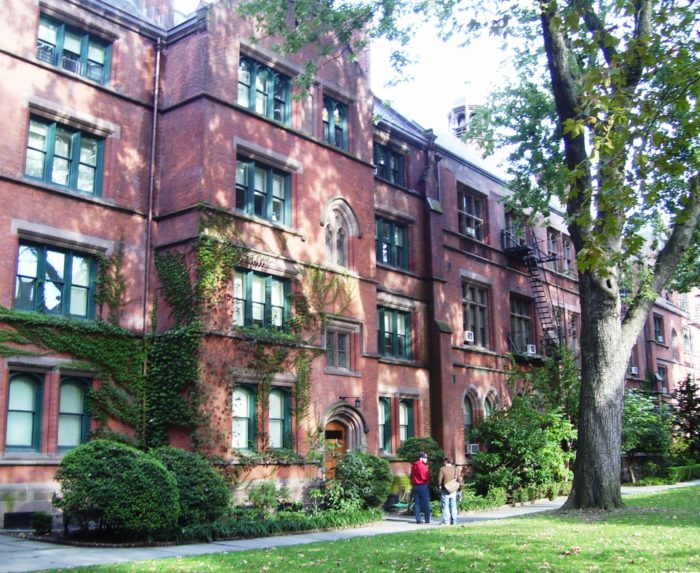
The General Theological Seminary. Image: Beyond My Ken/Wikimedia
The church was originally part of the General Theological Seminary of the Episcopal Church. In the early 19th century Clement Clarke Moore, the author of “A Visit from St. Nicholas” (aka “’Twas the Night Before Christmas”), owned most of what is now Chelsea, and he donated his 66-acre apple orchard to become the site of the seminary, construction of which began in 1827. The school’s first structure, the East Building, was razed in 1892 to make way for new buildings to accommodate the seminary’s growth. The remaining West Building (West 20th Street between Eighth and Ninth Avenues), built circa 1830, has the same Neo-Gothic allure as its onetime companion. Though the seminary sold the West Building in 2012, it still makes up a border of the school’s leafy close.
The Chelsea Historic District consists of more than theological structures, of course. Perhaps the most notable residences are Cushman Row (406-418 West 20th Street, between 9th and 10th Avenues), seven Greek Revival brick townhouses built by Don Cushman in 1840. The homes (one of which provided the exterior shots for Elaine’s apartment in “Seinfeld”) remain beautifully preserved.
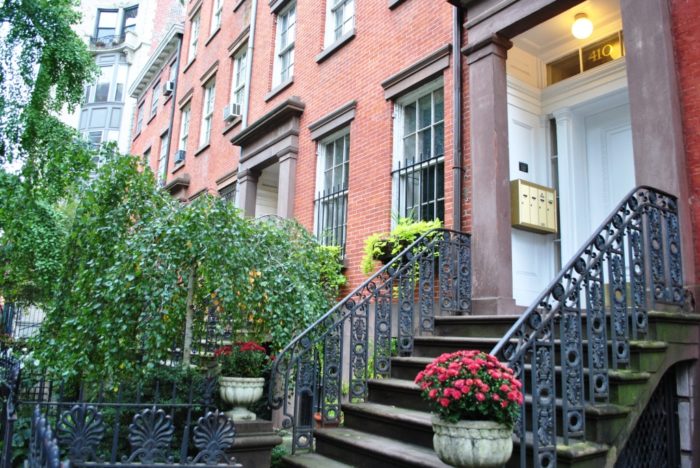
Cushman Row. Image: Elisa.rolle/Wikimedia
The West Chelsea Historic District, designated in 2008, includes the two blocks of West 26th to 28th Streets between 11th and 12th Avenues as well as parts of West 25th to 28th Streets between 10th and 11th Avenues. This area is younger than the Chelsea Historic District, its buildings dating primarily from 1885 to 1930, and its history is more industrial.
For example, the seven-story Renaissance Revival building at 260 11th Avenue (at West 26th Street) was built in 1912 for the Otis Elevator Company. With its limestone and cast-iron ornamentation and overhanging copper cornice, the building seems rather ornate for a factory. In fact, it also served as the company’s headquarters, and after Otis moved out in 1974, it was for several years the home of Les Mouches, a supper club. Also built in 1912 just a block away was the former Zinn Building (210 11th Avenue at West 25th Street), later known as the Baron Building. Even more majestic than the Otis building, it stands 11 stories high and boasts columns, cornices, and terracotta gargoyles and arches, among other ornamentation. Built as the factory and headquarters for the Zinn metalworking company, today it houses a number of galleries.
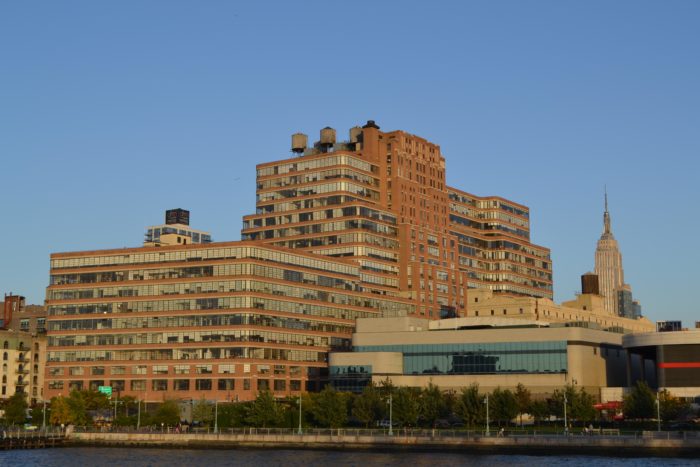
Starrett-Lehigh Building. Image: Richard Gould/Flickr
Situated within the West Chelsea Historic District but a landmarked building in its own right is the Starrett-Lehigh Building (601 West 26th Street, between 11th and 12th Avenues). Completed in 1931, it was originally a terminal for the Lehigh Valley Railroad as well as a warehouse and office building. Conceived as a 15-story structure, it ended up being 19 stories in the center with an 18-story eastern wing and a 9-story western wing.
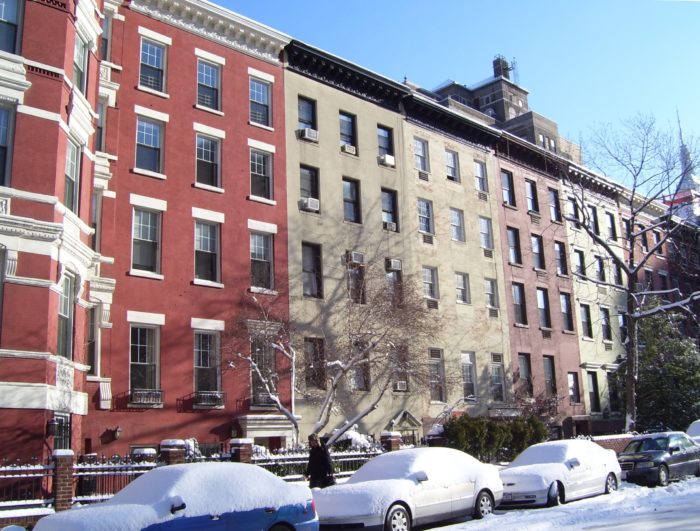
Lamartine Place. Image: Beyond My Ken/Wikimedia
The third of Chelsea’s historic districts, Lamartine Place, is its smallest, consisting of 333-355 West 29th Street (between Eighth and Ninth Avenues). These 12 townhouses were built between 1849 and 1852. At that time West 29th Street was named after French writer and politician Alphonse de Lamartine, and “Lamartine Place” appeared on maps until 1902. The district is notable not only for the well-preserved brick homes but also because 339 West 29th Street was a stop on the Underground Railroad. The original owners, James Sloan Gibbons and Abby Hopper Gibbons, were staunch abolitionists who saw their house all but destroyed by opponents of Abraham Lincoln during the July 1863 Draft Riot.
The Historic Districts of Chelsea


